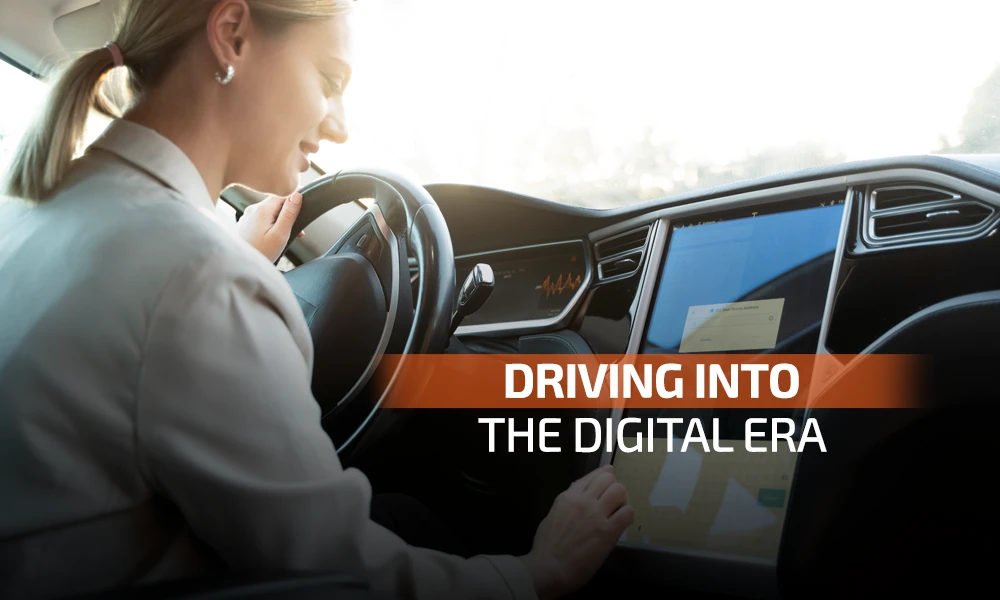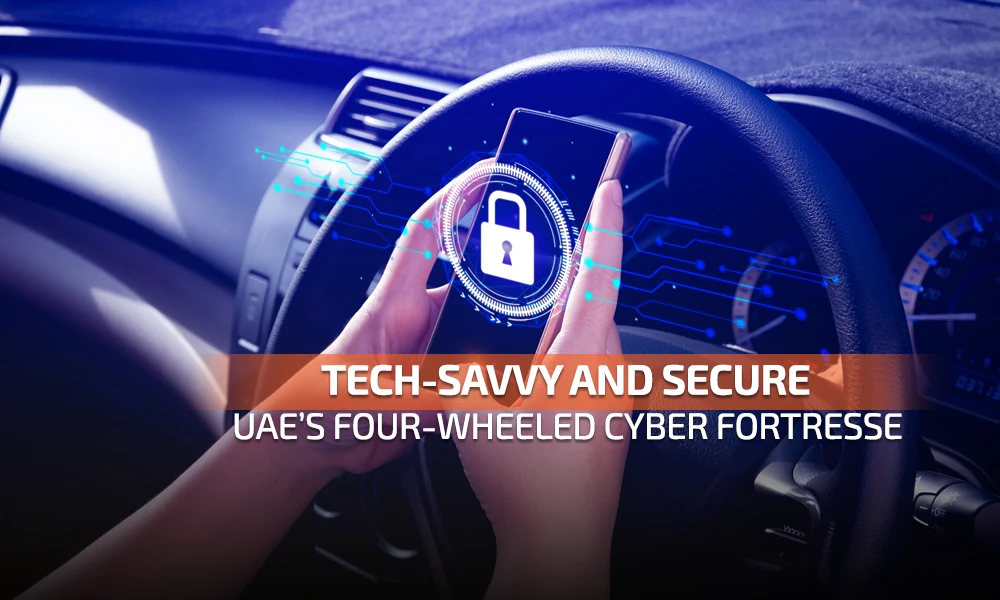How Cars Are Getting Smarter, Safer & Greener
Step into any modern vehicle today, and you’ll find yourself surrounded not just by metal and leather, but by intelligence. From voice assistants to self-parking features, and from real-time navigation to over-the-air updates, the automotive world is rapidly changing.
Welcome to the digital era of driving, where automotive technology is no longer a futuristic concept—it’s the new normal. Let’s take a drive through this transformation and explore how automated driving, electric powertrains, and connected vehicles are shaping the roads of tomorrow.
The Rise of the Connected Car
Think of your car as a smartphone on wheels. With integrated systems that sync with your phone, navigate through traffic, monitor your vehicle’s health, and even alert emergency services, connected cars are redefining convenience and safety.
As highlighted in this article, cars today are equipped to send and receive information constantly. They can communicate with other vehicles, infrastructure, and cloud systems in real-time, offering:
- Live traffic updates and dynamic rerouting
- Predictive maintenance alerts
- Personalized in-car entertainment and settings
- Remote locking, tracking, and diagnostics
This level of connectivity is a core component of modern automotive technology, and it’s only getting more advanced.
What Lies Ahead
Looking forward, expect these trends to accelerate:
- Widespread Level 2+ features—active steering assist, traffic sign recognition, adaptive parking
- Affordable EVs and hybrids—with longer range and faster charging
- Autonomous ride-sharing pilots in select cities
- Smart city integration—where vehicles, roads, and buildings collaborate to improve safety and reduce emissions
As these efforts unfold, keeping pace with automotive technology shifts and automated driving advancements will be essential for stakeholders across industries.
Automated Driving: Letting the Car Take Control
Perhaps the most exciting development in the digital automotive space is automated driving. While we’re not all cruising around in fully self-driving cars yet, we’re much closer than you might think.
Understanding the Levels of Automation
Here’s a quick breakdown:
- Level 1-2: These are already common—features like lane-keep assist and adaptive cruise control.
- Level 3: The car can handle most driving, but the driver must remain alert.
- Level 4-5: Full self-driving with no driver input required in specific environments.
According to Shape the Sky, systems are already being tested that can navigate cities, read signs, avoid obstacles, and make real-time decisions—all without human input.
The benefits of automated driving include:
- Reduced accidents due to human error
- Improved traffic flow
- Easier mobility for people with disabilities or the elderly
Of course, there are challenges too—legal issues, safety concerns, and questions about cybersecurity. But progress is being made at a remarkable pace.
Electric Vehicles: Quietly Leading the Way
While digital tools and automation are turning heads, electric vehicles (EVs) are quietly becoming the backbone of future mobility.
Our article on why electric cars are taking over dives deep into this shift. Here’s a quick summary of what makes EVs so appealing:
- Lower fuel and maintenance costs
- Instant torque for quick acceleration
- Zero tailpipe emissions
- Quiet, smooth driving experience
Pair an electric motor with smart automotive technology, and you get a car that’s not only good for the planet but smart enough to take care of itself and its passengers.
Hybrids: The Perfect Middle Ground
Not quite ready to go fully electric? You’re not alone. That’s where hybrids come in.
Hybrid vehicles use a combination of petrol and electric power, offering a great balance between fuel efficiency and flexibility. Whether it’s a plug-in hybrid or a self-charging one, these cars are often equipped with digital displays, energy recovery systems, and advanced driver aids.
We recently explored this in our blog on hybrid cars. If you’re thinking of easing into the EV lifestyle, hybrids are a fantastic place to start.
Smart Roads and Digital Driving
It’s not just cars that are changing—the roads themselves are getting smarter. We’re moving towards a world where:
- Traffic lights communicate with vehicles
- Roads send hazard alerts in real time
- Parking spaces tell your car where they are
- Tolls are paid automatically through GPS
Imagine leaving home and your car instantly syncing with city infrastructure to give you the fastest, safest, and most eco-friendly route. This is where automotive technology is headed, blending seamlessly with smart cities to enhance the driving experience for everyone.
Challenges on the Road Ahead
With all these exciting changes, there are still bumps along the way.
- Regulations: Governments must update laws to handle self-driving cars, data sharing, and safety standards.
- Cybersecurity: As vehicles become more connected, they also become more vulnerable to hacking.
- Infrastructure: Not all roads are ready for digital and electric vehicles. Charging stations, smart signals, and 5G networks are still catching up.
Public trust is another big piece of the puzzle. Not everyone feels safe handling control over a machine, and that’s something automakers must address through education and transparent innovation.
The Promise and Challenges
Pros:
- Reduces driver fatigue and human error
- Boosts accessibility for non-drivers
- Enhances traffic flow and fuel efficiency
Cons:
- Legal and ethical complexities around liability
- Cybersecurity vulnerabilities—vehicles as mobile targets
- Infrastructure adaptation is needed for full rollout
So, What’s Next?
The next few years will bring even more transformation. Here’s what to watch for:
- More automated driving features are becoming standard in mid-range vehicles
- Wider adoption of EVs as battery costs drop and range increases
- Launch of urban air taxis and delivery drones
- Integration of cars into full smart home ecosystems
- AI that personalizes your drive based on mood, habits, and weather
In short, driving in the digital era isn’t just about getting from Point A to Point B. It’s about redefining mobility to be cleaner, smarter, safer, and even enjoyable.
FAQs – Driving Into the Digital Era
1. What is automotive technology?
Automotive technology refers to digital systems and innovations used to improve vehicle performance, safety, and connectivity.
2. What are connected cars?
Connected cars are vehicles equipped with internet access and smart features for communication, navigation, and diagnostics.
3. How does automated driving work?
Automated driving uses sensors, AI, and software to control a vehicle with minimal or no human input.
4. Are automated cars safe?
Yes, when properly tested and regulated, they can reduce accidents caused by human error.
5. What’s the difference between EVs and hybrid cars?
EVs run fully on electricity, while hybrids use both a gasoline engine and an electric motor.
6. Do digital cars require more maintenance?
Not necessarily. In fact, EVs and digital systems often reduce routine maintenance needs.
7. Can smart cars communicate with roads?
Yes, through Vehicle-to-Infrastructure (V2I) technology, enabling real-time updates and safer driving.
8. Are digital features available in all car models?
Many mid-range and premium models now include features like adaptive cruise control, lane assist, and infotainment systems.
9. Is automated driving legal everywhere?
No, regulations vary by country and are still evolving to support higher levels of automation.
10. What’s next in digital driving?
Expect wider use of AI, real-time data, and full automation integrated with smart city infrastructure.
Final Thoughts
We’re living through a major shift in the way we move. From automated driving systems that take the wheel to automotive technology that helps cars “think” and communicate, the future of transportation is no longer on the horizon—it’s here.
Whether you’re an early EV adopter, a fan of smart features, or just curious about what’s next, now is the perfect time to learn, adapt, and drive forward.
Stay connected with our blogs for more insights on how innovation is reshaping mobility—one ride at a time.







